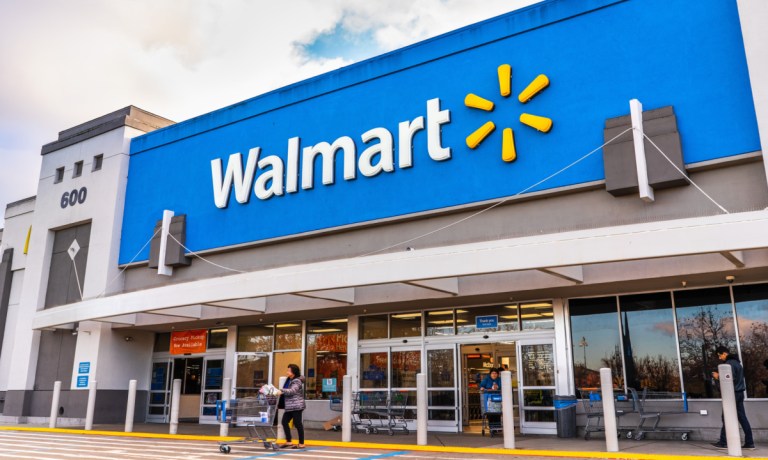As grocers compete for consumers’ loyalty amid inflation, Walmart is reportedly absorbing price increases while its competitors pass them on to consumers.
According to Reuters, analytics firm Dataweave looked at nearly 600 products from national brands across grocery categories, noting that, between January 2022 and February 2023, Walmart kept prices roughly steady — just a 3% increase — across digital and physical channels, while competitors raised prices higher. Specifically, Amazon showed a 7.5% increase in the prices of those products, and Kroger and Target both raised prices 9%.
Meanwhile, in February, the U.S. Bureau of Labor Statistics (BLS) saw all-item inflation up 6% and food at home (i.e., food from the grocery store) prices up 10% year over year. As such, Walmart has been far underpricing relative to the industry standard, a strategy that yields advantages in terms of shopper loyalty but makes it harder to maintain profit margins.
Research from the March edition of PYMNTS’ Consumer Inflation Sentiment report, “Consumer Inflation Sentiment: The False Appeal of Deal-Chasing Consumers,” which draws from a survey of more than 2,100 United States consumers, revealed that 44% of grocery shoppers are deal chasers, willing to go wherever they will get the best price. Plus, two-thirds of grocery shoppers cited prices and discounts as key factors influencing their decision of where to make their most recent purchase.
In a PYMNTS interview, Sean Turner, co-founder and CTO of retail FinTech Swiftly, detailed how consumers have become intentional in their grocery purchasing choices.
“Shoppers are clipping more coupons,” Turner said. “They’re really trying to compare prices across different stores. They might go to the Walmart website or app and see what the product costs there, then launch [another grocer’s] app and search for the same product there to see where it’s cheapest or where they can get a coupon or a discount.”
Advertisement: Scroll to Continue
As such, pricing initiatives are especially important, given the extent to which consumers overestimate the rate of grocery inflation. Research from the PYMNTS report “Consumer Inflation Sentiment: Perception Is Reality,” for which we surveyed more than 2,100 consumers, revealed that grocery shoppers estimate inflation to be twice the BLS-measured rate.
While Walmart’s grocery gains throughout this period may drive sales and loyalty, they come at a price. The company shared in its 2023 Annual Report, released last month, that its strong performance in grocery — particularly online grocery — has come with drawbacks. Specifically, the shift in mix to consumables puts pressure on the retailer’s margins.
“A greater concentration of eCommerce sales, including increasing online grocery sales, could result in a reduction in the amount of traffic in our stores and clubs,” the retailer stated in its 10-K filing with the U.S. Securities and Exchange Commission (SEC), “which would, in turn, reduce the opportunities for cross-store or cross-club sales of merchandise that such traffic creates and could reduce our sales within our stores and clubs and materially adversely affect our financial performance.”
Plus, last year, Walmart CEO Doug McMillon outlined more directly the challenge that this shift poses.
“We continue to see a heavier mix of sales in food and consumables in many of our markets, and that put pressure on margins overall,” McMillon said.




